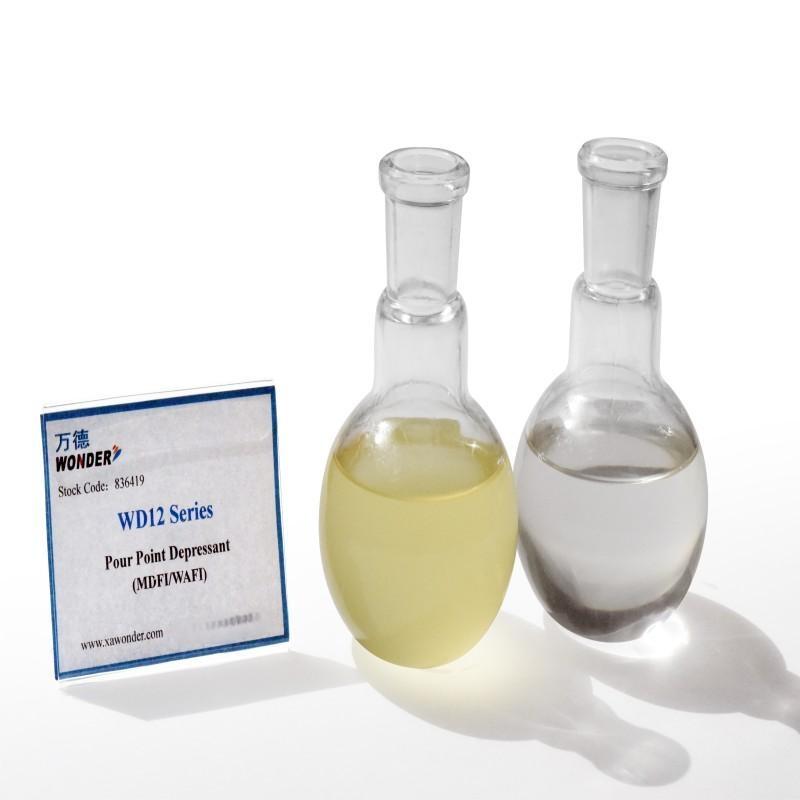-
Categories
-
Pharmaceutical Intermediates
-
Active Pharmaceutical Ingredients
-
Food Additives
- Industrial Coatings
- Agrochemicals
- Dyes and Pigments
- Surfactant
- Flavors and Fragrances
- Chemical Reagents
- Catalyst and Auxiliary
- Natural Products
- Inorganic Chemistry
-
Organic Chemistry
-
Biochemical Engineering
- Analytical Chemistry
-
Cosmetic Ingredient
- Water Treatment Chemical
-
Pharmaceutical Intermediates
Promotion
ECHEMI Mall
Wholesale
Weekly Price
Exhibition
News
-
Trade Service
Libyan Oil Minister Mohammed Aoun recently said Libyan crude oil production will increase to "just over 1 million barrels
per day.
" This is a milestone for the North African country, which has more than
halved its crude oil production since mid-April.
Since the outbreak of the Libyan civil war in 2011, Libya's crude oil production has been volatile and volatile
.
The fluctuation of Libyan crude oil production also often tugs at the "heartstrings" of the market, especially in the tight supply and demand pattern, the news of Libya's production cuts is often accompanied by the rise in oil prices, and the impact of the Libyan oil industry on the crude oil market is obvious
.
This article focuses on the situation of the Libyan oil industry and further uncovers the reasons
behind the sharp fluctuations in Libyan oil production.
The figure shows the change in the global supply and demand balance of EIA crude oil
The figure shows the comparison between the growth rate of the global economy and the growth rate of crude oil demand
Geological conditions: rich in oil and gas resources
Libya's proven oil reserves in 2021 were 48 billion barrels, ranking 10th in the world, and Libya's oil production reached 1.
252 million barrels per day in 2021, ranking 17th in the world, accounting for 1.
31% of world production, and its reserve-to-production ratio is about 105
.
Among them, Libya's crude oil production in 2021 was 1.
148 million barrels per day, accounting for 4.
37%
of OPEC's crude oil production.
The picture shows the top 10 countries with proven oil reserves in the century in 2021
The picture shows Libya's crude oil export area
Libyan crude oil is low-sulfur, lightweight, efficient and environmentally friendly, which makes it more popular
with oil-importing countries.
Because of this, this little-known North African country has been valued by the United States since the beginning of its independence, and the United States has formulated relevant policies to maintain good relations
with Libya.
In addition, the flat terrain of the Sirte Basin in Libya is difficult to extract, which also makes the development cost and transportation cost of crude oil relatively low, which makes the development of Libya in the early stage of crude oil exploration very smooth
.
Natural geographical and geological advantages have increased Libya's oil competitiveness
.
Due to Libya's central location in the Mediterranean, it is convenient to travel from Libya to Spain, France, Italy, Greece, Turkey and other countries, so Western European countries are also the main exporters of
Libyan crude oil.
The picture shows the terrain of Libya
Impact of the civil war: Oil production and exports suffered
Libya became an Italian colony during World War I; occupied by Britain and France during World War II; It became independent in 1951 and established the Idris dynasty
.
Before and after independence, most Libyans worked in agriculture or animal husbandry, and a small number along the coast worked in fishing
.
Most of the country struggles with poverty, arable land occupies only 1 percent of the country's land area, and even foreign invaders often occupy only Libya's relatively wealthy coastal areas
.
In 1969, the "Free Officers" led by Muammar Gaddafi launched the "September Revolution" to overthrow the Idris dynasty and establish the Libyan Arab Republic
.
In 2011, civil war broke out in Libya, the Qaddafi regime officially fell, and the opposition became the ruling authority
in Libya.
Since then, Libya has been mired in a long period of war and conflict, which eventually led to a confrontation between two major forces - the national unity government in the capital Tripoli and the National Assembly centered on the eastern city of Toubrug
.
The prolonged fighting has also caused local oil production and exports to suffer from time to time
.
The picture shows Libyan crude oil production
Industrial change: fierce competition for energy at home and abroad
During the Idris dynasty, under the 1955 Petroleum Law, the Libyan government received 50 per cent
of the net income of foreign oil companies after deducting extraction costs and operating and administrative expenses.
But at this stage, Libya's oil pricing and sales power is in the hands
of foreign companies.
In 1961, Libya amended its Petroleum Law to redefine the taxation of foreign oil companies and to make it clear that future concessions would be awarded
on a competitive basis.
Libya joined OPEC in 1962, and with the help of OPEC, Libya passed amendments to the Petroleum Law in 1965, which weakened the special status of independent oil companies that produce in Libya, and since then all Libyan oil companies have paid taxes
at the same rate.
In April 1968, Libya's state-owned oil company, the Libyan General Petroleum Corporation (LIPCO), was established to deal with all domestic and foreign affairs related to the national oil industry, including the planning and implementation of the national oil policy, the determination and maintenance of oil prices, etc
.
In 1969, Libya supplied a quarter of the oil supplies of six Western European countries (excluding Monaco), making it the world's sixth largest oil producer and Africa's largest oil producer
.
After Gaddafi came to power in 1969 through a coup, America's best interests in Libya had shifted from military bases to oil economic interests
.
At the end of 1971, Libya began to nationalize its oil resources, and Gaddafi nationalized BP's Salil oil field in Libya, on the basis of which the Libyan Arabian Gulf Oil Company
was established.
In 1972, the Libyan government decided to nationalize 51 percent of foreign oil companies in order to exercise control
over oil sovereignty.
After three years of struggle, Libya has nationalized all or part of the shares of foreign oil companies, and 75% of oil production has been controlled
by the Libyan National Oil Company.
Since the mid-to-late 70s of the 20th century, due to the emergence of North Sea oil and intensified competition with Nigerian oil fields, the Libyan government began to consider the sustainable exploitation
of domestic oil resources.
The second oil crisis in 1979 led to an oversupply of the international oil market in the 80s of the 20th century, oil prices fell, and Libya reduced production twice
in 1980.
In January 1981, when Reagan became president of the United States, he began to suppress Libya economically, militarily and diplomatically; In August of the same year, Libya and the United States broke out in the air war in the Gulf of Sirte, and the two countries severed diplomatic relations
.
In 1982, the United States imposed an oil embargo on Libya, and American oil companies, including Exxon, withdrew from Libya, coupled with the decline in international oil prices, the Libyan economy was hit hard, the number of oil exports was halved, and the national economy seriously declined
.
After the withdrawal of all U.
S.
oil companies, European oil companies established long-term friendly exploitation and trade relations with the Libyan government, which somewhat eased Libya's oil export crisis, and in 1988, Libya's crude oil exports began to climb
.
In November 1991, the United States, together with Britain and France, accused Libya of planning the 1988 Lockerbie air disaster
to the United Nations Security Council.
In February 1992, international sanctions against Libya were imposed, and in November 1993, the United Nations Security Council adopted Resolution 843, imposing additional sanctions on Libya: freezing Libya's foreign assets, tightening embargoes, prohibiting Libya from using certain types of equipment at terminals and refineries, and attacking the oil industry
, the main source of Libya's state budget.
From the time of the issuance of United Nations sanctions until 2000, Libya's oil exports were stable at 1 million barrels per day, and the main buyers were Italy, Germany, Spain, Greece and other European countries
.
Because these countries have developed a considerable dependence on Libya's high-quality oil, they have not reached an agreement
with the United States on sanctions against Libya.
Through lobbying the government, PetroItalpine ensured a strategic cooperative relationship between Libya and Italy, and Germany and Switzerland also established cooperation with Libya and established oil companies
in Libya.
After the outbreak of the Iraq war, Libya made it clear that it agreed to pay a huge compensation of $2.
7 billion to the relatives of the victims of Lockerbie and pledged to cooperate
with the United States in the international fight against terrorism.
In January 2004, senior U.
S.
Representative Weldon led a congressional delegation to Libya, where the two sides discussed ways to establish and promote equal relations between the two countries, breaking the ice in
relations between the United States and Libya.
After the sanctions were lifted, Libya's oil exports rose sharply, reaching 1.
4 million barrels per day at one point, and Libya ushered in a golden period
of oil development after the collapse of the Soviet Union.
In 2008, the collapse of international oil prices and the global economic crisis seriously affected Libya's oil revenues, losing the lubrication of oil revenues, and the contradictions between the three major tribes in Libya became increasingly acute
.
In February 2011, civil war broke out in Libya and Qaddafi was killed in October, beginning a chaotic situation
of disintegration and continuous war.
Libya's main oil-producing region, the Sirte Basin, was one of the hardest damaged areas in the civil war, with four terminals – Iside, Port Brega, Ras Lanuf and Zuertina – all suffering varying degrees of damage
.
On September 1, 2011, more than 60 countries met in Paris to discuss Libya's post-war reconstruction efforts, and Libya began its transition
from civil war to post-war reconstruction.
The unfreezing of overseas assets met the financial needs of the National Transitional Council and the Transitional Government in the short term, providing financial support
for the resumption of production in the Libyan oil industry.
In 2012, Libya's oil exports largely returned to pre-war levels
.
From 2013 to 2016, Libyan forces fiercely competed for oil and energy, blocked major ports, severely damaged oil facilities, frequently engaged in strikes and shutdowns of employees in the energy sector, and surrounded oil fields and refineries, directly affecting local oil production and exports
。 In January 2020, government forces in the east blocked all oil export terminals in eastern Libya and closed pipelines connecting the main oil fields in the southwest, Sharara and El Feel to the coast, so that for most of 2020, Libya's offshore fields were the only fields in production, with crude oil production averaging only 100,000 barrels
per day between February and September.
It was not until October 2020 that the Libyan East-West governments signed a ceasefire agreement, the Libyan National Oil Company was relieved of force majeure, and oil production resumed
.
Production outlook: Supply elasticity is fragile
Since the 21st century, there have been frequent internal wars in Libya, which have affected local oil production for a long time, and the frequent blockade of oil ports during the war has further affected the country's oil exports
.
On the one hand, Libya's oil supply volatility in the volatile political environment, on the other hand, the long-term lack of funds provided by national oil companies for oil field development and infrastructure maintenance further hinders the development of the local oil industry, and Libya's oil supply elasticity is also relatively fragile
.
At present, the supply and demand structure of the oil market has transitioned from tight supply and demand to loose supply and demand, but in the case of limited supply and demand gap, if the civil unrest in Libya again drags down the supply increase process in the later stage, the transformation process of crude oil supply and demand structure will slow down, and the downward resistance of oil prices will also increase
.







